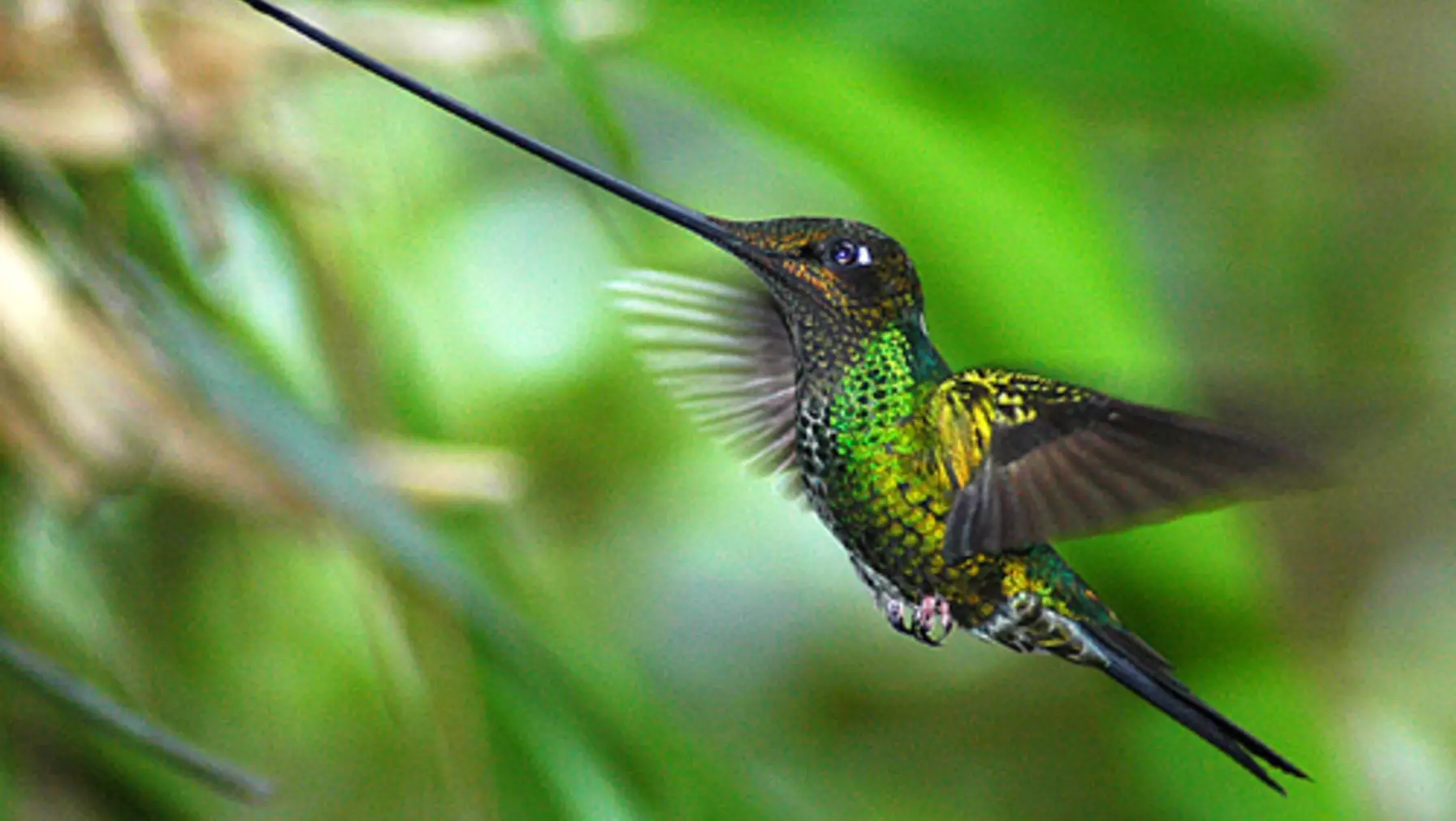This represents a scan of the skeleton of a Sword-billed Hummingbird (Ensifera ensifera), a species of the South American Andes, mostly above 2500 m elevation. This is the only bird species in which the bill is longer than the rest of the bird. It is highly adapted to feed on flowers with very long corollas, for example species of Brugmansia, Passiflora, Datura, and Fuchsia, among others. Most of these flowers hang straight down, and the hummingbird comes up from below to feed on their nectar and pollinate them. The tongue, of course, has to be very long to accomplish this, and the tongue (hyoid) bones are also shown in the scan, above the bill. You can see where the base of the tongue bones wrap around the skull, and you can also see the posterior end of one of these bones above the bill base. The lower mandible is broken off at the tip.
Hummingbirds are rather unusual birds in the relatively large size of their sternum. Note that it makes up much of the volume of the body skeleton and has a very large keel for muscle attachment. In this species especially, you can imagine that very powerful flight muscles are needed to propel that bill across the landscape! I would assume it has well-developed neck muscles as well. Also note the wing bones; what you see are the bones of the hand, relatively very large in hummingbirds because most of the flight surface of the wing is taken up by the primaries, which attach to the hand. In a bird wing, the primaries are the source of thrust, and hummingbirds depend on thrust for much of their flight; the lift provided by the inner wing feathers in most birds is of little importance to hummingbirds.

